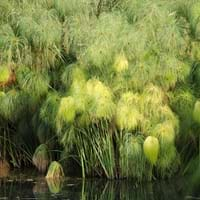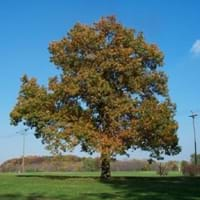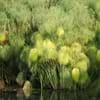Life Span
Perennial
Perennial
Origin
Africa
North America, United States, Northeastern United States, Mid-Atlantic United States, Southeastern United States, North-Central United States, Central United States, South-Central United States, Canada
Types
C. papyrus, C. papyrus 'Nanus
Japanese Evergreen Oak, Sawthorn Oak, Oriental White Oak
Number of Varieties
Not Available
Habitat
Lakes, Shores of rivers or lakes, sluggish streams and rivers, Swamps
Woodland Garden Canopy
USDA Hardiness Zone
7-11
4-8
Sunset Zone
H1, H2, 16, 17, 23, 24
2a, 2b, 3a, 3b, 4, 5, 6, 7, 8, 9, 14, 15, 16, 17
Habit
Clump-Forming
Upright/Erect
Flower Color
Tan
Red, Light Yellow, Yellow green
Flower Color Modifier
Bicolor
Bicolor
Fruit Color
Brown
Brown, Sandy Brown, Chocolate
Leaf Color in Spring
Green, Light Green
Green, Copper
Leaf Color in Summer
Green, Light Green
Dark Green
Leaf Color in Fall
Green, Light Green
Orange, Brown, Dark Red
Leaf Color in Winter
Green, Light Green
Not Available
Leaf Shape
Grass like
Lobed
Plant Season
Spring, Summer, Fall, Winter
Spring, Summer, Fall, Winter
Sunlight
Full Sun, Partial Sun
Full Sun, Partial Sun
Type of Soil
Clay, Loam, Sand
Clay, Loam, Sand
The pH of Soil
Neutral
Acidic, Neutral
Soil Drainage
Poorly Drained
Average
Bloom Time
Indeterminate
Spring
Tolerances
Drought
Wet Site, Drought
Where to Plant?
Container, Ground, Pot
Ground
How to Plant?
Stem Planting
Seedlings, Transplanting
Plant Maintenance
Medium
Medium
Watering Requirements
Average Water Needs, Keep ground moist, Requires a lot of watering
Average Water Needs, Keep the ground moist but not water-logged, Needs a lot of water initially, occasional watering once established, Water Deeply
In Summer
Lots of watering
Lots of watering
In Spring
Moderate
Moderate
In Winter
Average Water
Average Water
Soil pH
Neutral
Acidic, Neutral
Soil Type
Clay, Loam, Sand
Clay, Loam, Sand
Soil Drainage Capacity
Poorly Drained
Average
Sun Exposure
Full Sun, Partial Sun
Full Sun, Partial Sun
Pruning
Remove damaged leaves, Remove dead branches, Remove dead leaves
Remove branches, Remove damaged fruit, Remove damaged leaves, Remove dead branches, Remove dead leaves, Remove dead or diseased plant parts, Remove deadheads
Fertilizers
All-Purpose Liquid Fertilizer
All-Purpose Liquid Fertilizer, High amounts of nutrients, organic fertlizers
Pests and Diseases
fungus
Red blotch
Plant Tolerance
Drought
Drought, Wet Site
Flowers
Showy
Insignificant
Flower Petal Number
Single
Not Available
Edible Fruit
No
Not Available
Fragrant Bark/Stem
No
Yes
Foliage Texture
Not Available
Medium
Foliage Sheen
Glossy
Glossy
Attracts
Flying insects, Hummingbirds
Birds
Allergy
Not Available
Hay fever, Itchy eyes, Runny nose, sneezing, Watery eyes, Whooping Cough
Aesthetic Uses
Showy Purposes
Not Used For Aesthetic Purpose
Beauty Benefits
Not Available
Not Available
Edible Uses
Insignificant
Yes
Environmental Uses
Air purification
Air purification, Nesting sites for birds, Shadow Tree, Shelter for wildlife, Wildlife
Medicinal Uses
Cancer, Heals minor burns, Wounds
Antiaphonic, Antiasthamatic, Astringent, Chronic fatigue, Cold, Dysentry, Emetic, Febrifuge, Haemorrhages, Indigestion, Opthalmic, Salve, Sore Eyes, Sore throat, Tonic, Treating fever
Part of Plant Used
Stem
Inner Bark, Leaves, Seeds
Other Uses
Constructing Boats, Used as fuel, Used in paper industry
Tannin, Used as a dye, Used as fuel, Used as insect repellent, Used for woodware
Used As Indoor Plant
Yes
No
Used As Outdoor Plant
Yes
Yes
Garden Design
Bog Garden, Container, Feature Plant, Houseplant, Mixed Border, Water Gardens
Feature Plant, Shade Trees
Botanical Name
CYPERUS 'Wild Spike'
QUERCUS velutina
Common Name
Papyrus, Wild Spike Cyperus
Black Oak
In Hindi
पेपिरस संयंत्र
Black Oak Tree
In German
ägyptischen Papyrus-Pflanze
Schwarz Oak Tree
In French
Papyrus égyptien
Noir Oak Tree
In Spanish
Papiro egipcio
Negro del árbol de roble
In Greek
αιγυπτιακό πάπυρο
Black Oak Tree
In Portuguese
Papiro egípcio
Carvalho Preto
In Polish
Papiro egipcio
Czarny Dąb
In Latin
CHARTA
Niger quercum ligno
Phylum
Magnoliophyta
Magnoliophyta
Class
Agaricomycetes
Magnoliopsida
Family
Cyperaceae
Fagaceae
Clade
Angiosperms, Commelinids, Monocots
Angiosperms, Eudicots, Rosids
Subfamily
Cyperoideae
Not Available
Number of Species
Not Available
Importance of Egyptian Papyrus and Black Oak
Want to have the most appropriate plant for your garden? You might want to know the importance of Egyptian Papyrus and Black Oak. Basically, these two plants vary in many aspects. Compare Egyptian Papyrus and Black Oak as they differ in many characteristics such as their life, care, benefits, facts, etc. Every gardener must at least have the slightest clue about the plants he wants to plant in his garden. Compare their benefits, which differ in many ways like facts and uses. The medicinal use of Egyptian Papyrus is Cancer, Heals minor burns and Wounds whereas of Black Oak is Antiaphonic, Antiasthamatic, Astringent, Chronic fatigue, Cold, Dysentry, Emetic, Febrifuge, Haemorrhages, Indigestion, Opthalmic, Salve, Sore Eyes, Sore throat, Tonic and Treating fever. Egyptian Papyrus has beauty benefits as follows: Not Available while Black Oak has beauty benefits as follows: Not Available.
Compare Facts of Egyptian Papyrus vs Black Oak
How to choose the best garden plant for your garden depending upon its facts? Here garden plant comparison will help you to solve this query. Compare the facts of Egyptian Papyrus vs Black Oak and know which one to choose. As garden plants have benefits and other uses, allergy is also a major drawback of plants for some people. Allergic reactions of Egyptian Papyrus are Not Available whereas of Black Oak have Hay fever, Itchy eyes, Runny nose, sneezing, Watery eyes and Whooping Cough respectively. Having a fruit bearing plant in your garden can be a plus point of your garden. Egyptian Papyrus has no showy fruits and Black Oak has showy fruits. Also Egyptian Papyrus is not flowering and Black Oak is not flowering . You can compare Egyptian Papyrus and Black Oak facts and facts of other plants too.





